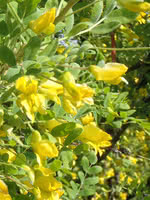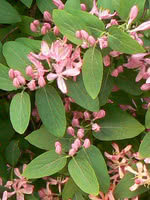 |
| Cart reopens in November
Subscribe to our email list
|
Common Caragana vs Twining HoneysuckleCaragana arborescens Lonicera dioica SOLD OUT ONLY AVAILABLE BY CONTRACT GROW
Common Caragana is a fast growing shrub that's known for its exceptional hardiness and drought tolerance. Although it's most commonly planted in shelterbelts, Common Caragana is also an excellent hedge or feature shrub.
Twining Honeysuckle is a vine native to the forests of Canada and the United States. COMMON CARAGANA QUICK FACTSTWINING HONEYSUCKLE QUICK FACTS
Berries:
round, red clusters
Growth rate:
medium
Growth rate:
medium
Maintenance:
medium
Maintenance:
medium
Pollution tolerance:
high
Pollution tolerance:
high
In row spacing: 0.3 m (1.0 ft)
Between row spacing:
5 m (16 ft)
Other Names:
black karagana, caragana, pea tree, siberian pea shrub, yellow acacia
Other Names:
glaucous honeysuckle, limber honeysuckle, wild honeysuckle
|

